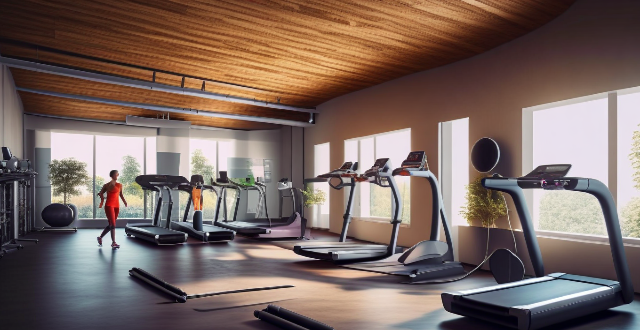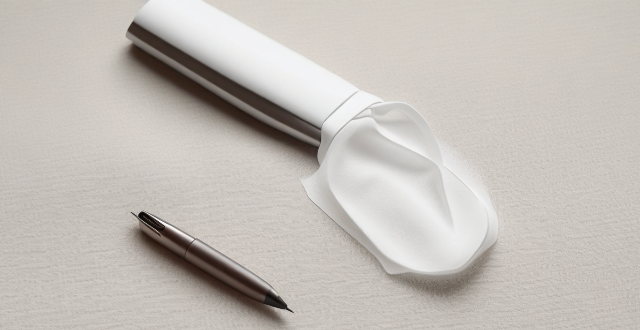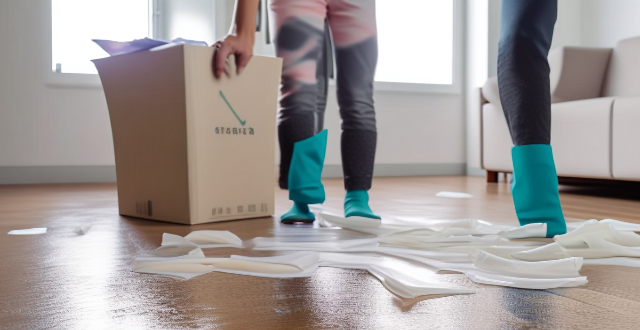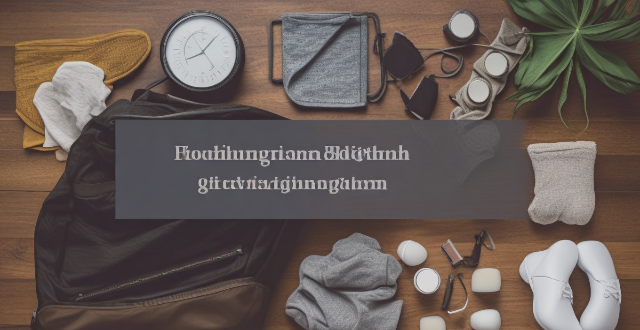Garment Compression

What is the significance of compression garments in sports attire ?
Compression garments are tight-fitting clothes designed to provide a snug fit and exert pressure on the body. These garments offer numerous benefits that can enhance performance, recovery, and overall well-being in sports attire. Some of the key benefits include improved blood circulation, enhanced recovery, temperature regulation, support and stability, and psychological advantages. By promoting better blood flow, compression garments help to deliver more oxygen to working muscles, remove metabolic waste, reduce muscle vibration, and minimize inflammation and swelling after exercise. They also regulate temperature in both hot and cold environments, provide joint and muscle support, and boost confidence and mental preparation for athletes. Incorporating compression garments into sports attire can optimize performance and recovery, making them a valuable addition for athletes across various disciplines.

What's the best way to treat set-in stains on white clothing ?
Set-in stains on white clothing can be stubborn and difficult to remove, but with the right approach, they can often be successfully treated. Here are some steps to follow: 1. Identify the Stain: First, identify the type of stain you are dealing with. Different stains require different treatments. For example, protein stains like blood or grass require a different approach than tannin stains like tea or coffee. 2. Act Quickly: The sooner you treat a stain, the easier it is to remove. If the stain is still wet, blot it with a clean cloth or paper towel to remove as much of the substance as possible. 3. Pre-Treat the Stain: Before washing, pre-treat the stain with a suitable stain remover. Choose a product that is safe for use on white clothing and apply it directly to the stain following the instructions on the label. Let it sit for the recommended time. 4. Wash in Hot Water: Wash the garment in hot water, using a detergent that is designed for white clothing. Check the care label on your garment to ensure that it can be washed in hot water. If not, use the warmest water recommended. 5. Use Chlorine Bleach if Necessary: If the stain persists after washing, you can use chlorine bleach. However, be sure to check the care label on your garment first. Some fabrics may not be able to handle bleach. If your garment is made of a material that can be safely bleached, add chlorine bleach to the wash cycle according to the package instructions. 6. Rinse Thoroughly: Rinse the garment thoroughly to remove all traces of the stain and any cleaning products used. 7. Dry and Check: Dry the garment and check to see if the stain has been removed. If not, repeat the process before drying again. Once the stain is gone, you can dry the garment as usual. In conclusion, treating set-in stains on white clothing requires patience and persistence. By identifying the stain, acting quickly, pre-treating, washing in hot water, using chlorine bleach if necessary, rinsing thoroughly, drying, and checking, you can often successfully remove even the most stubborn stains.

How to care for and maintain your sports fashion garments ?
Sporting fashion garments are designed to be both stylish and functional, but they also require special care to maintain their quality and appearance. Here are some tips on how to properly care for and maintain your sports fashion garments: Washing instructions include reading the label, sorting clothes, using a gentle detergent, hand washing or machine washing on delicate cycle, and avoiding tumble drying. Maintenance tips include storing properly, avoiding ironing, spot cleaning stains, rotating garments, and repairing tears and holes. By following these care and maintenance tips, you can extend the lifespan of your sports fashion garments and keep them looking their best for years to come.

How do compression algorithms contribute to network optimization ?
Compression algorithms are crucial for network optimization by reducing data transmission, thus improving speed, bandwidth consumption, and network performance. They also enhance security and disaster recovery capabilities.

How do UV-protective fabrics influence the design of outdoor sportswear ?
The integration of UV-protective fabrics in the design of outdoor sportswear has significantly influenced its functionality and safety. Material selection, garment construction, aesthetics, and durability are key considerations in this process. Designers ensure that these garments offer protection from harmful UV rays while also being comfortable, durable, and visually appealing.

What factors should I consider when buying a swimsuit for competitive swimming ?
Factors to Consider When Buying a Swimsuit for Competitive Swimming: Material, Compression, Fit, Chlorine Resistance, and Style.

How do anti-bacterial fabrics contribute to sportswear innovation ?
Anti-bacterial fabrics contribute to sportswear innovation by improving hygiene, enhancing durability, improving performance, and offering customization options. They reduce the growth of bacteria in garments, keeping them fresher for longer periods, extending their lifespan, and providing a comfortable and dry environment during physical activities. Manufacturers can choose from various antimicrobial agents and treatments to create unique garments that cater to specific needs.

Is there a natural way to clean stains off my clothes ?
Removing stains from clothes can be challenging, but natural methods like using white vinegar, baking soda, lemon juice, hydrogen peroxide, and salt can effectively clean various types of stains. These techniques are gentle on the environment and clothing.

What are the latest advancements in sportswear technology ?
The latest advancements in sportswear technology include smart garments with sensors for real-time performance feedback, improved materials for comfort and moisture management, customized footwear for personalized fit and support, and augmented reality training for interactive and engaging learning experiences. These innovations are enhancing athletes' efficiency, comfort, and overall experience, helping them achieve their goals faster and more effectively.

How do I remove ink or pen marks from my clothing ?
Removing ink or pen marks from clothing can be challenging, but with the right techniques, it's often possible. Identify the type of ink, act quickly to blot wet ink, pre-treat the stain using appropriate methods for water-based, oil-based, or permanent marker ink, machine wash following care label instructions, check the stain before drying, and dry according to care label instructions. Always test cleaning solutions on an inconspicuous area first and consider professional cleaners for delicate or valuable garments. Patience and persistence are key when dealing with stubborn stains.

How has technology influenced the design of sports fashion ?
Technology has significantly influenced sports fashion design, introducing advanced materials, digital printing techniques, smart wearables, and increased customization options. These innovations have enhanced the functionality, comfort, and style of sports apparel, catering to individual preferences and needs.

Are there any smart strategies for packing clothing to avoid wrinkles ?
Smart strategies for packing clothing to avoid wrinkles include rolling instead of folding, using tissue paper or dry cleaner's plastic to layer between items, packing heaviest items on bottom, utilizing every bit of space, hanging what you can, choosing wrinkle-resistant fabrics, and handling delicates with care. These tactics help minimize wrinkles in packed clothes, keeping your wardrobe looking crisp and fresh throughout your journey.

Which industries commonly use combination motor drives ?
Combination motor drives, or variable frequency drivesCombination motor drives, or variable frequency drives are electronic devices that control the or variable frequency drives (VFDs), are electronic devices that control the speed of AC electric motors. They are widely used in various industries for energy saving, control precision, and process optimization. Some sectors where combination motor drives are commonly employed include manufacturing and production industries, such as food and beverage processing, pharmaceuticals, automotive manufacturing, paper and pulp, energy and utilities, transportation and logistics, HVAC and refrigeration, textile and garment industry, pumps and compressed air systems. The adaptability and efficiency benefits of combination motor drives make them an integral part of modern industrial processes.

Can protective clothing be reused after being exposed to chemicals or biological agents ?
The reusability of protective clothing after exposure to chemicals or biological agents is determined by factors such as the type of garment, nature of contaminants, and level of exposure. Potential risks include inadequate decontamination, material degradation, and cross-contamination. Best practices for handling and disposal involve immediate removal, proper storage, appropriate decontamination processes, and safe disposal methods like incineration or landfill disposal according to local regulations. Adherence to these practices is crucial for maintaining safety and preventing further contamination.

Can vinegar be used as a natural stain remover for clothes ?
Vinegar can be used as a natural stain remover for clothes due to its acidic properties and antimicrobial benefits. It is effective in removing various types of stains, including grass, blood, wine, coffee, tea, and sweat. To use vinegar as a stain remover, apply it directly to the stain, let it sit for 5-10 minutes, scrub gently, rinse with cold water, and wash according to care label instructions. Vinegar is cost-effective, environmentally friendly, and versatile. However, it should be tested on an inconspicuous area before use and avoided on delicate fabrics.

What are some quick and easy ways to get my clothes clean ?
Here are some quick and easy ways to keep your wardrobe fresh and clean: 1. Spot Cleaning: For small stains or spills, dampen a cloth with water or a mild detergent and gently blot the affected area until the stain is removed. 2. Hand Washing: Fill a sink or basin with warm water and add a small amount of gentle detergent. Gently agitate clothing items in the water, then rinse thoroughly and hang to dry. 3. Machine Washing: Sort clothes by color and fabric type before washing. Use a gentle cycle and cold water for delicate items, and warmer water for more durable fabrics. 4. Dry Cleaning: Check care labels on garments made from silk, wool, or other delicate materials. If dry cleaning is recommended, take clothes to a professional dry cleaner. 5. Air Drying: Hang clothes outside on a clothesline or indoors on a drying rack to save energy and prolong their lifespan. This method also helps eliminate wrinkles and static cling. 6. Steaming: Hang clothes in a steamy bathroom after a shower or use a handheld garment steamer to remove wrinkles and odors. By incorporating these methods into your routine, you can keep your wardrobe looking its best without spending hours on laundry day.

What are the best ways to wash clothes quickly and effectively ?
This article discusses the best ways to wash clothes quickly and effectively. It covers preparation steps such as sorting clothes, pre-treating stains, and checking pockets. It also explains how to set up a washing machine with the right cycle, warm water, and detergent. Handwashing clothes is another option that involves soaking clothes in warm water with detergent, scrubbing gently, rinsing thoroughly, and hanging to dry. After washing, drying clothes properly is important to prevent wrinkles and damage. Overall, following these steps can help you save time and keep your clothes clean and fresh.

What are some effective treatments for sports injuries ?
Effective Treatments for Sports Injuries: Rest, Ice, Compression, Elevation, Medication, and Rehabilitation Exercises.

What is the best way to treat a sprained ankle on the spot ?
Resting the ankle is the first step in treating a sprained ankle. This will help reduce swelling and pain. Ice can also be applied to the affected area for 20 minutes at a time, several times a day, to reduce inflammation. Compression helps to reduce swelling by keeping fluid from pooling in the injured area. A compression bandage or ACE wrap can be used to provide this support. Elevating the ankle above the level of the heart can help reduce swelling by allowing blood to flow away from the injury site. It is important to keep the foot elevated when resting, but not necessarily while walking. Over-the-counter pain relievers such as ibuprofen or naproxen can be used to reduce pain and inflammation. However, it is important to follow the dosage instructions and avoid taking too much. If the sprain is severe, physical therapy may be necessary to restore range of motion and strength in the ankle. A physical therapist can create a rehabilitation plan tailored to the individual's needs. In rare cases, surgery may be required to repair damaged ligaments or tendons. This is usually only recommended if other treatments have failed.

What are the best travel packing tips for a long trip ?
Packing for a long trip can be challenging, but with these tips, you'll be able to pack efficiently and strategically. Plan your outfits, pack lightweight clothing, choose versatile shoes, pack smart accessories, bring multipurpose toiletries, use packing cubes or compression sacks, and leave room for souvenirs. By following these tips, you'll have everything you need for your journey without overpacking or sacrificing style.

How can I prevent further injury while recovering from a sports injury ?
Recovering from a sports injury can be tough, but taking the right steps can prevent further harm. Here's how: 1. **Rest and Ice**: Rest to allow healing; apply ice to reduce swelling and pain. 2. **Compression and Elevation**: Use compression to reduce swelling and elevate the injured area above heart level. 3. **Gradual Return to Activity**: Work with a physical therapist and listen to your body as you gradually regain strength and mobility. 4. **Proper Gear and Technique**: Ensure you have the right gear and use proper form to prevent future injuries. 5. **Stay Hydrated and Nourished**: Drink plenty of water and eat a balanced diet to support your body's healing process.

How do I administer CPR correctly in an emergency situation ?
Administering CPR correctly in an emergency situation involves a series of steps to ensure the victim receives proper care until professional help arrives. The key steps include: checking the safety of the scene, calling for help, checking the victim's responsiveness, looking for an AED, opening the airway, checking for breathing, performing chest compressions if the victim is not breathing, giving rescue breaths (if trained), using an AED (if available), and continuing CPR until help arrives or the victim starts breathing normally. The quality of chest compressions is crucial, as they must be hard and fast enough to mimic a heartbeat and force blood out to vital organs.

What are some common sports injuries and how are they treated with sports medicine ?
This article discusses common sports injuries and their treatment in sports medicine. It covers sprains, strains, fractures, dislocations, concussions, rest and ice, compression and elevation, physical therapy, surgery, and rehabilitation. The article emphasizes the importance of understanding these injuries and seeking appropriate care to prevent them and promote recovery.

How do I pack efficiently for a weekend getaway ?
Efficient packing for a weekend getaway can be achieved by creating a list, choosing versatile clothing, rolling clothes instead of folding them, using packing cubes or compression sacks, minimizing toiletries and electronics, packing lightweight shoes, utilizing all available space, and considering carry-on luggage only. These strategies help maximize suitcase space while ensuring travelers have everything they need for a fun and relaxing trip.

What are the best practices for packing light for a road trip adventure ?
Packing light for a road trip adventure is key to enjoying the journey without being weighed down by excess baggage. Best practices include planning outfits in advance, using packing cubes or compression sacks, rolling clothing instead of folding, sticking to a color scheme, opting for travel-size toiletries, wearing bulkiest items on the plane, and limiting accessories. By following these tips, you can ensure an enjoyable and stress-free road trip adventure.

What are some clever travel packing hacks for saving space ?
Traveling can be an exciting adventure, but packing your belongings can sometimes feel like a daunting task. However, with some clever packing hacks, you can maximize the space in your suitcase or backpack and avoid overpacking. Here are some tips to help you save space while packing: - Roll Your Clothes: Instead of folding your clothes, roll them up tightly. This not only saves space but also helps prevent wrinkles. You can even roll multiple items together, such as a shirt and its corresponding undergarments, to keep them organized. - Use Compression Bags or Packing Cubes: Compression bags allow you to squeeze out all the air from your clothing, significantly reducing their volume. Packing cubes, on the other hand, help you organize your items and make the most of the available space by filling odd-shaped gaps within your luggage. - Fill Your Shoes: Shoes tend to take up a lot of room, but they can also serve as storage containers. Stuff small items like socks, chargers, or even jewelry inside your shoes to save space elsewhere. Just make sure the items are clean and won't damage the shoes. - Layer Your Clothes: When packing outfits, layer them on top of each other rather than placing them side by side. This way, you can see everything at once and ensure that you have enough combinations without having to pack extra pieces. - Utilize Every Inch of Space: Think about the pockets in your luggage, the space inside your hats, and even the hollow tubes of toiletry bottles. These areas can hold small items like headphones, adapters, or medications that would otherwise take up valuable real estate in your bag. - Wear Your Bulkiest Items: If you have bulky items like sweaters, jackets, or boots, consider wearing them during travel rather than packing them. This not only saves space but also keeps you warm if you're traveling to a cold destination. - Choose Versatile Clothing: Pack items that can be worn in multiple ways or dressed up and down. For example, a scarf can double as a beach cover-up, and a dress can transition from day to night with different accessories. - Limit Your Toiletries: Instead of bringing full-size bottles, transfer your toiletries into smaller travel containers. You can also opt for solid shampoo bars or soap instead of liquid products to save space. - Pack According to Your Itinerary: Plan your outfits ahead of time and only pack what you know you will wear. Consider the activities you have planned and the weather at your destination to avoid overpacking unnecessary items.

What are some tips for packing light for a backpacking trip ?
This text offers tips for packing light and efficiently for a backpacking trip. It suggests planning outfits, packing multipurpose items, choosing the right bag, rolling clothes, wearing bulkiest items, using packing cubes or compression sacks, limiting shoes, digitalizing reading material, and laying out everything before packing to ensure a more enjoyable and stress-free adventure.